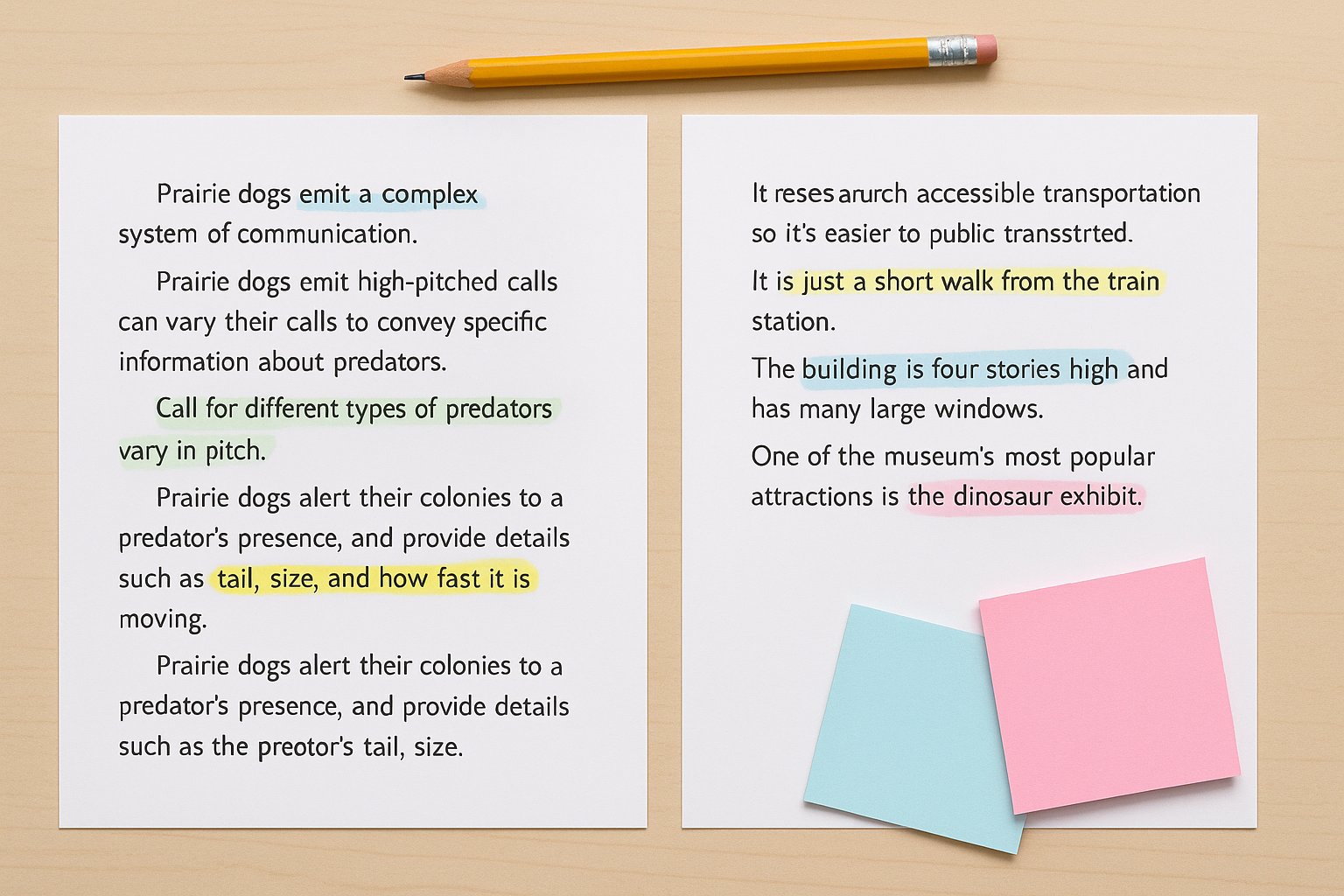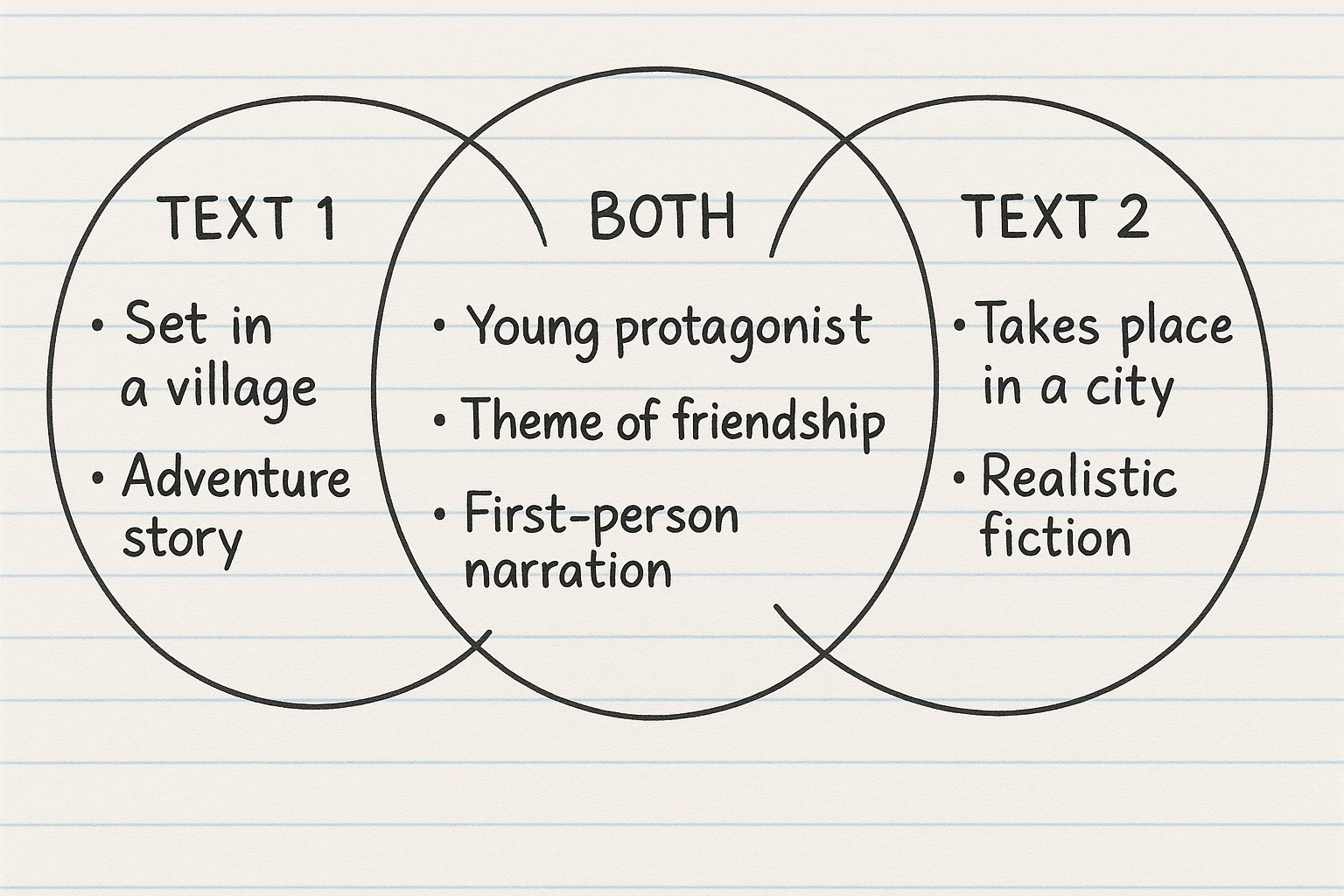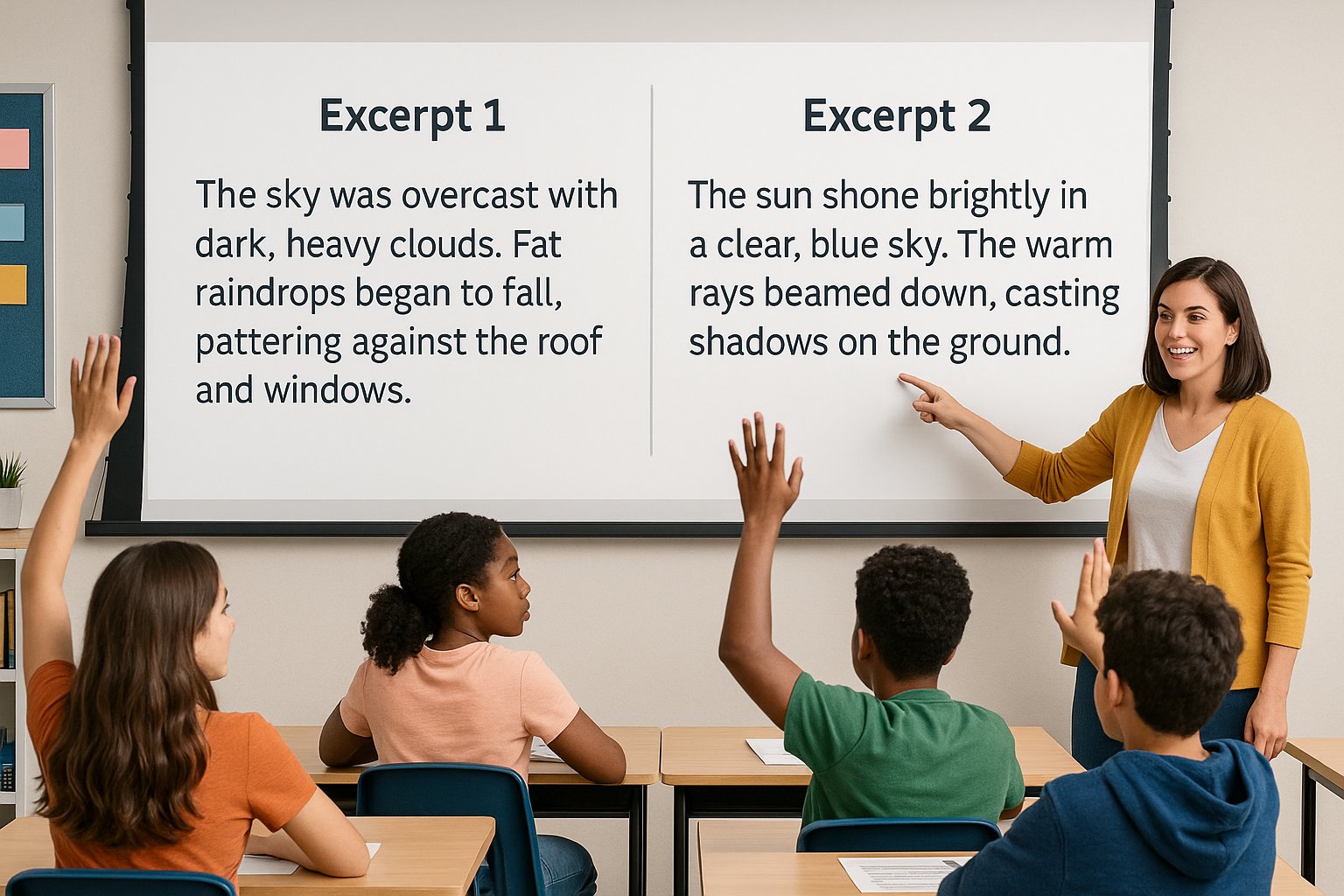Reading · Paired Texts
How to Use Paired Texts in Middle School ELA: A Step-by-Step Guide

Why Paired Texts Hit So Many Standards at Once
Paired texts can feel intimidating at first, but they’re one of the most efficient ways to hit multiple standards in a single lesson. With two related texts, students can:
- Compare and contrast themes, central ideas, and points of view.
- Analyze how authors use different evidence to support a claim.
- Evaluate which text is more convincing—and explain why.
- Practice the exact type of reading they’ll see on state tests.
The key is not just handing students two random readings. It’s choosing texts with a clear connection and scaffolding the comparison step by step.
Step 1: Choose Strong Text Pairs
Start by deciding what you want students to compare. Then choose texts that make that comparison obvious but still interesting. A good pair usually shares:
- The same topic but different opinions (e.g., cell phones in school).
- The same theme but different genres (e.g., a poem and a short story about perseverance).
- The same event from two perspectives (e.g., a news article and a personal narrative).
Examples of Paired Text Ideas
- Article arguing for school uniforms + article arguing against them.
- Myth about a hero’s journey + modern short story with a similar arc.
- Historical speech + modern op-ed on a related issue.

Step 2: Read and Annotate Each Text Separately
Don’t rush the comparison. Students need a solid understanding of each text on its own before you ask them to connect them. For each text, have students:
- Underline the main claim or central idea.
- Highlight 2–3 key pieces of evidence.
- Jot a margin note about the author’s tone or point of view.
You can use different highlighter colors for each task to make the annotations visually clear.
Step 3: Map the Connection with a Simple Organizer
Once both texts are annotated, use a graphic organizer to pull the thinking together. A few easy options:
- Venn diagram: Great for theme and main idea comparisons.
- Two-column chart: Perfect for pro/con or claim/evidence across texts.
- T-chart with ratings: Students rate which text is more convincing and why.
Keep the organizer simple; the power is in the discussion and writing that follows.
Question Stems for Paired Texts (Grades 6–8)
Once students understand both texts, use question stems that push them to compare, evaluate, and synthesize. Try:
- “How are the authors’ views on ______ similar? How are they different?”
- “Which text gives stronger evidence for its claim? Explain why.”
- “How does each author use structure (cause/effect, problem/solution, etc.) to make their point?”
- “If you combined the best ideas from both texts, what would your recommendation be?”
These stems work for partnered discussions, quick writes, or full CER responses.

Using Paired Texts for Writing
Paired texts are a natural bridge into writing tasks. After reading and discussing, try prompts like:
- “Which author do you agree with more? Use evidence from both texts.”
- “Explain how both authors develop the same theme in different ways.”
- “Write a third text that responds to both authors’ ideas.”
These prompts work beautifully with CER paragraphs, short constructed responses, or longer essays.
Making Paired Texts Feel Doable (Not Overwhelming)
The biggest mistake with paired texts is trying to do everything at once—every standard, every question, every skill. Start small: one clear focus, one simple organizer, one strong writing or discussion task.
Over time, you can build more complex comparisons, connect to your argument units, or even link paired texts to digital games and activities. With the right scaffolds, your students will move from “Two passages?!” to “Okay, I see how these connect.”